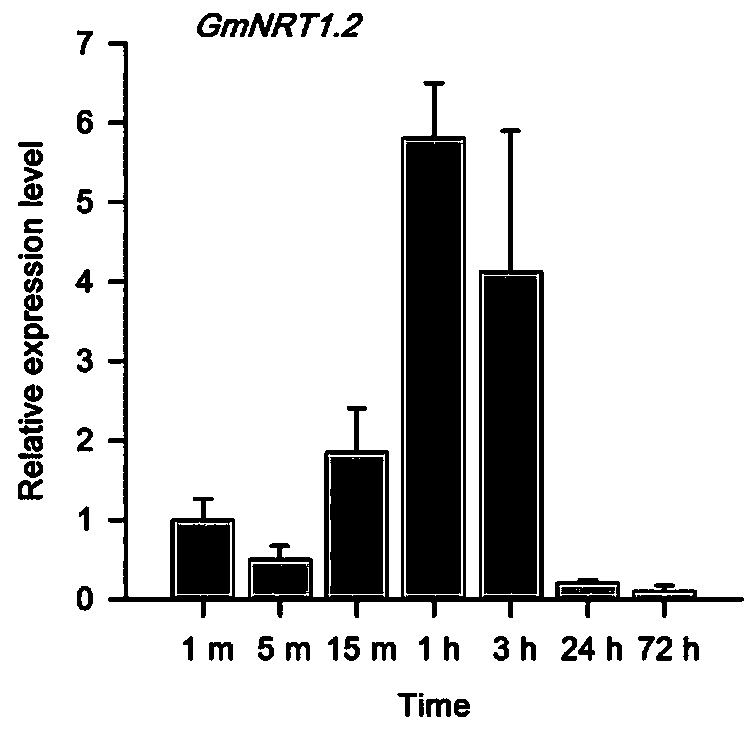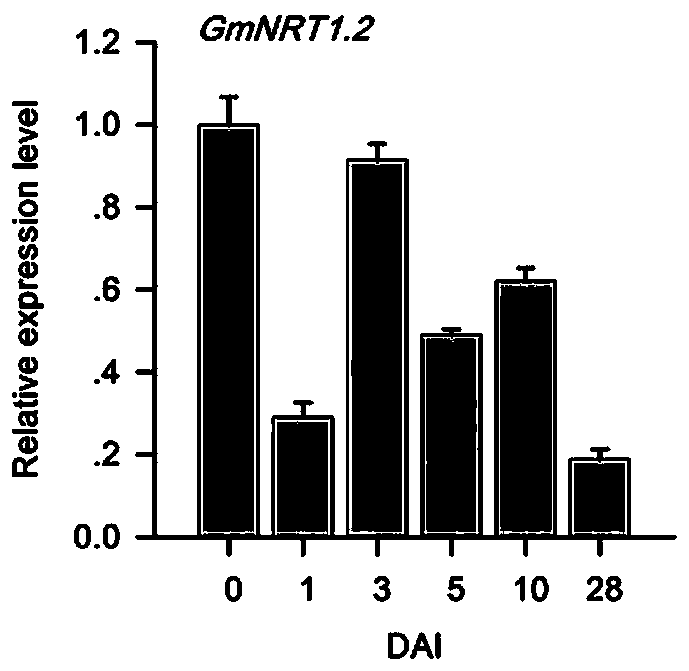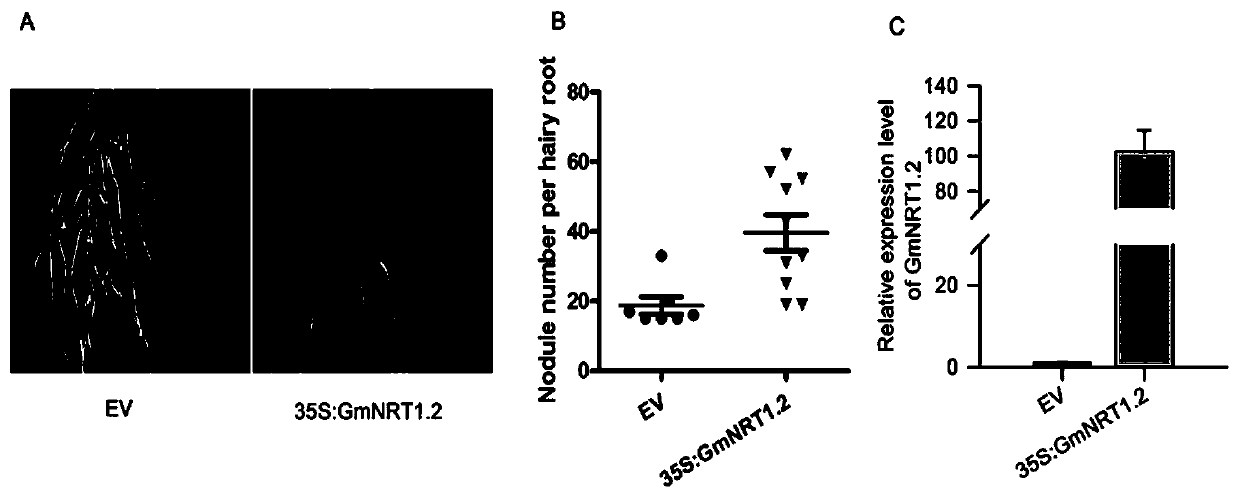A method for cultivating high nodulation nitrogen-fixing plants
A plant and nodulation technology, which is applied in the field of genetic engineering, can solve the problems of unseen regulatory effects, and achieve the effect of improving the ability of nodulation to fix nitrogen and increase soybean yield
- Summary
- Abstract
- Description
- Claims
- Application Information
AI Technical Summary
Problems solved by technology
Method used
Image
Examples
Embodiment 1
[0021] Embodiment 1, GmNRT1.2 Analysis of expression patterns of genes in response to nitrate treatment.
[0022] 1. Material acquisition: The material used in the experiment is Williams 82 (referred to as W82); the material is carried out according to the following process: soybean seeds are sterilized with 70% sprinkler for 30 sec, sown in the vermiculite substrate soaked in low-nitrogen nutrient solution, They were cultured in a culture room with 16 h light / 8 h dark, light intensity 7000 LUX, temperature 26 °C, and relative humidity 70%. 15 days after sowing, the vermiculite was poured out, the soybean seedlings were soaked in a high-concentration nitric acid nutrient solution, and the main roots were harvested after 1 min, 5 min, 15 min, 1 h, 3 h, 24 h and 72 h of treatment, respectively. and lateral root samples. Among them, low nitrogen: 0.25 mM; high nitrogen: 15.75 mM.
[0023] 2. Isolation of mRNA: Trizol method was used to extract soybean total RNA. ①Put the tiss...
Embodiment 2
[0029] Embodiment 2, GmNRT1.2 Analysis of expression patterns of genes in response to rhizobia infection.
[0030] 1. Material acquisition: The material used in the experiment is Williams 82 (referred to as W82); the material is carried out according to the following process: soybean seeds are sterilized with 70% sprinkler for 30 sec, sown in the vermiculite substrate soaked in low-nitrogen nutrient solution, They were cultured in a culture room with 16 h light / 8 h dark, light intensity 7000 LUX, temperature 26 °C, and relative humidity 70%. 15 days after sowing, do inoculation with rhizobia, and each plant is inoculated with bradyrhizobia USDA110 bacterial solution (OD 600=0.08) 30 mL, and soybean roots were collected at 0, 1, 3, 5, 10 and 28 days after inoculation.
[0031] 2. Isolation of mRNA: Trizol method was used to extract soybean total RNA. ①Put the tissue into the grinder and grind it with liquid nitrogen for 3 times, then add 0.1-0.2 g of the ground tissue into a...
Embodiment 3
[0037] Example 3. Cultivation of transgenic soybeans with high nodulation nitrogen fixation ability.
[0038] 1. Extraction of total RNA from root tissue of Wilimas82 soybean.
[0039] The mortar has been treated at 180 ℃ for 8 hours or burned to eliminate RNase contamination; reagents such as chloroform, isopropanol, and ethanol should be freshly opened and uncontaminated; other equipment such as pipette tips, centrifuge tubes and reagents such as ultrapure water , NaAc, were treated with 1 ‰ DEPC water overnight, and then sterilized at 121 ℃ for 30 minutes, and the pipette tip and centrifuge tube were dried at 65 ℃ for later use; Trizol method was used to extract soybean total RNA:
[0040] (1) Take 100 mg of soybean root material and grind it with liquid nitrogen, add 1 mL of TRI pure reagent, after fully homogenizing, suck the homogenate into a 1.5 mL centrifuge tube, and place it at room temperature for 5 min;
[0041] (2) Add 200 μl chloroform, vortex to mix, let stand ...
PUM
 Login to View More
Login to View More Abstract
Description
Claims
Application Information
 Login to View More
Login to View More - R&D
- Intellectual Property
- Life Sciences
- Materials
- Tech Scout
- Unparalleled Data Quality
- Higher Quality Content
- 60% Fewer Hallucinations
Browse by: Latest US Patents, China's latest patents, Technical Efficacy Thesaurus, Application Domain, Technology Topic, Popular Technical Reports.
© 2025 PatSnap. All rights reserved.Legal|Privacy policy|Modern Slavery Act Transparency Statement|Sitemap|About US| Contact US: help@patsnap.com



